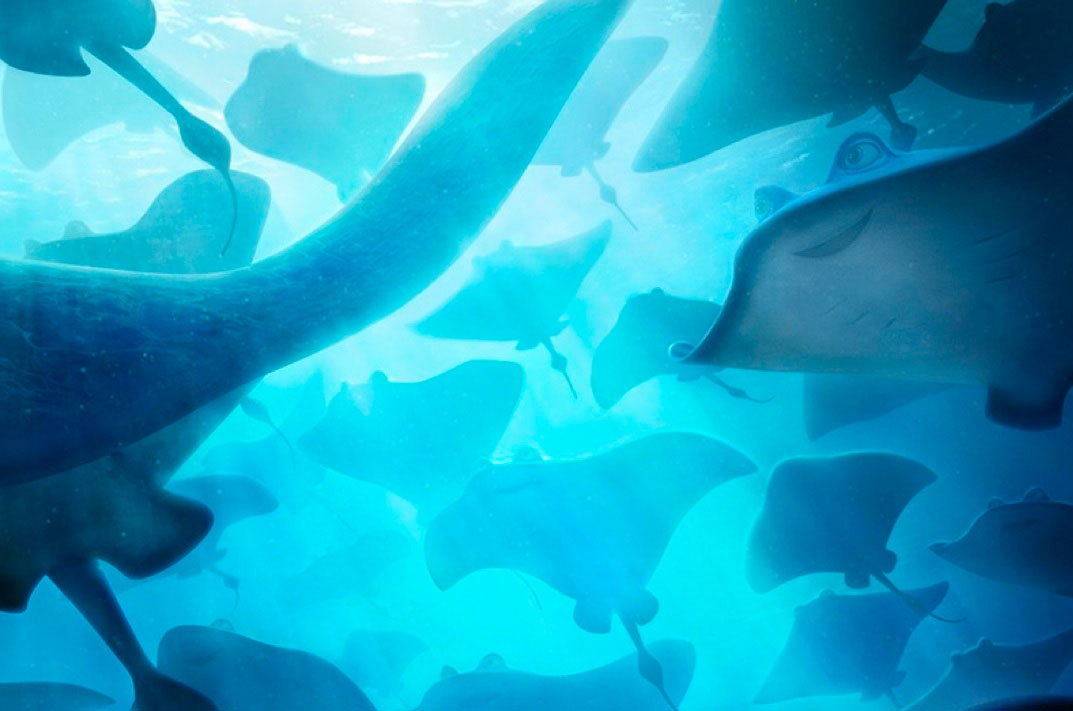“MURE: Fast Agent Based Crowd Simulation for VFX and Animation”
Conference:
Type(s):
Entry Number: 56
Title:
- MURE: Fast Agent Based Crowd Simulation for VFX and Animation
Presenter(s)/Author(s):
Abstract:
Crowd simulation in visual effects and animation is a field where creativity is often bound by the scalability of its tools. High end animation systems like Autodesk Maya [Autodesk ] are tailored for scenes with at most tens of characters, whereas more scaleable VFX packages like SideFX’s Houdini [SideFX] can lack the directability required by character animation. We present a suite of technologies built around Houdini that vastly improves both its scalability and directability for agent based crowd simulation. Dubbed MURE (Japanese for “crowd”), this system employs a new VEX context with lock-free, multithreaded KD-Tree construction/look-up, a procedural finite state machine for massive animation libraries, a suite of VEX nodes for fuzzy logic, and a fast GPU drawing plugin built upon the open source USD (Universal Scene Description) library [Pixar Animation Studios ]. MURE has proven its success on two feature films, The Good Dinosaur, and Finding Dory, with crowd spectacles including flocks of birds, swarms of fireflies, automobile traffic, and schools of fish.
Pixar has a history with agent based crowd simulation using a custom Massive [Massive Software] based pipeline, first developed on Ratatouille [Ryu and Kanyuk 2007], and subsequently used on Wall-E, Up, and Cars 2. A re-write of the studio’s proprietary animation software, Presto, deprecated this crowd pipeline. The crowds team on Brave and Monster’s University replaced it with a new system for “non-simulated” crowds that sequenced geometry caches [Kanyuk et al. 2012] via finite state machines and sketch based tools [Arumugam et al. 2013]. However, the story reels for The Good Dinosaur called for large crowds with such complex inter-agent and environment interaction that simulated crowds were necessary. This creative need afforded Pixar’s crowd team the opportunity of evaluate the pros and cons of our former agent based simulation pipeline and weigh which features would be part of its successor. Fuzzy logic brains and customizable navigation were indispensable, but our practice of approximating hero quality rigs with simulatable equivalents was fraught with problems. Creating the mappings was labor intensive, lossy, and even when mostly correct, animators found the synthesized animation splines so foreign that many would start from scratch rather than build upon a crowd simulation. The avoid this pitfall, we instead opted to start building our new pipeline around pre-cached clips of animation and thus always be able to deliver crowd animators clean splines. This reliance on caches also affords tremendous opportunities for interactivity at massive scales. Thus, rather than focusing on rigging/posing, the goals of our new system, MURE, became interactivity and directability.
References:
Arumugam, H., Frederickson, M., and Northrup, J. D. 2013. Crowds at monsters university. In ACM SIGGRAPH 2013 Talks, ACM, New York, NY, USA, SIGGRAPH ’13, 51:1–51:1. Google ScholarDigital Library
Autodesk. Maya Software Website: http://www.autodesk.com/products/maya/overview.Google Scholar
Brooks, R. 1986. A robust layered control system for a mobile robot. Robotics and Automation, IEEE Journal of 2, 1 (Mar), 14–23.Google Scholar
Bulletphysics.org. Project Website: http://bulletphysics.org/wordpress/.Google Scholar
Kanyuk, P., Park, L. J. W., and Weihrich, E. 2012. Headstrong, hairy, and heavily clothed: Animating crowds of scotsmen. In ACM SIGGRAPH 2012 Talks, ACM, New York, NY, USA, SIGGRAPH ’12, 52:1–52:1. Google ScholarDigital Library
Massive Software. Company Website: http://www.massivesoftware.com.Google Scholar
Pixar Animation Studios. Universal Scene Description Website: http://graphics.pixar.com/usd/.Google Scholar
Ryu, D., and Kanyuk, P. 2007. Rivers of rodents: An animation-centric crowds pipeline for ratatouille. In ACM SIGGRAPH 2007 Sketches, ACM, New York, NY, USA, SIGGRAPH ’07. Google ScholarDigital Library
SideFX. Company Website: http://sidefx.com.





